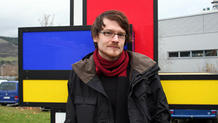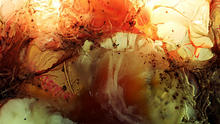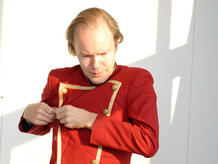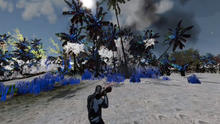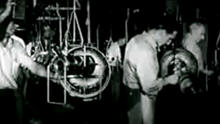grau
(2004)is a personal reflection by Robert Seidel on memories coming up during a car accident, where past events emerge, fuse, erode and finally vanish ethereally. Various real sources where distorted, filtered and fitted into a sculptural structure.
Various real sources where distorted, filtered and fitted into a sculptural structure to create not a plain abstract, but a very private snapshot of a whole life within its last seconds. Music by Heiko Tippelt and Philipp Hirsch.
The living paintings (Tableaux Vivants) of growing structures branch out over 10:01 minutes (a reference to the binary system by Gottfried Wilhelm Leibniz, where he ascribes 1 to god and 0 to the devil) without ever reaching pure black or white respectively. Every element originates from real experiences and is adapted from sketches, body fragments or scientific visualization methods. For example the first, still colored seconds are the prismatic halos of the collision fading into gray ("grau" in german)... The musical framework connects the memories born out of the dramatic moment to clusters. These are unleashed from the image flux partially - to ease the desired, free associations of the beholder...
Source: Australian electronic music, arts, media, project listings
_grau is a mesmerizing, beautiful and disturbing work of art that fuses dark and light to create organic forms and amorphous shapes. The scenes unfold slowly, elegantly revealing tensions between seemingly simple fragments of life. It feels like a long look at some primordial soup giving birth to some of the world's first life forms, or one-celled organisms that can't quite fully resolve themselves. The soundtrack, with its lonely drones rising and falling, make us believe we are witnessing a dark creation. The director's most impressive accomplishment was in going beyond the technology of the computer to create something that feels as if it is made of real moments in time, inside a reality only slightly offset from our own.
Source: SHIFT


